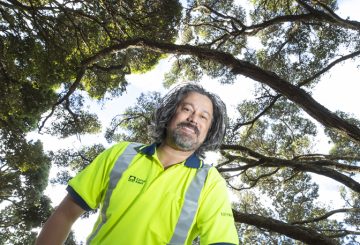키잉기 투헤이티아 초상화 어워드 전시회는 2023년 5월에 열릴 예정입니다.행사 주최측은 마오리 초상화의 범위를 확장하고 키잉기탕가와 와이탕기 간의 관계를 강화하는 것을 목표로 한다.
와이탕기 테 콩가후 박물관은 2023년 키잉기 투헤이티아 초상화 어워드의 최종 후보작 43명의 작품을 선보이는 전시회를 개최할 예정이다.격년으로 열리는 이 전국 대회는 떠오르는 마오리 예술가들이 투푸나 (tūpuna) 로 알려진 조상의 초상화를 만들도록 장려합니다.
수상 및 전시회는 다양한 시각 예술 매체를 사용하는 신진 마오리 예술가들의 기술과 재능을 조명할 수 있는 발판 역할을 한다.키잉기 투헤이티아 초상화 어워드는 2020년 8월에 처음 시작되었으며, 첫 대회와 시상식은 2021년에 개최되었습니다.
와이탕기 트리티 그라운드 (Waitangi Treaty Grounds) 의 큐레이터 및 학습 책임자인 샤넬 클라크는 특히 올해 초 국왕의 와이탕기 방문에 이어 이번 순회 전시회 개최에 대해 설레는 마음을 드러냈다.
클라크는 이번 전시회에서 다양한 예술 작품을 선보이고 있으며, 많은 예술가들이 투푸나를 표현하는 방식의 한계를 뛰어넘고 있다고 말했다.일부 작품에는 AI 생성 작품을 포함하여 디지털 요소가 포함되기도 합니다.전통 예술과 현대 예술 형식이 혼합되어 오늘날 마오리 예술가들이 누릴 수 있는 흥미로운 기회를 잘 보여줍니다.
클라크에 따르면 마오리 초상화는 유럽의 이상에 국한되지 않고 마오리 예술가들이 선택하는 모든 형태를 취할 수 있다.그녀는 재현의 선택은 전적으로 예술가들의 몫이라고 강조했다.점토 (우쿠) 와 조각 (화카이로) 과 같은 마오리 전통 예술 형식도 전시회에 포함된다.
키잉기 투헤이티아 초상화 어워드는 신진 예술가들을 대상으로 하며, 이들 중 다수가 두 번째로 참여합니다.클라크는 이번 전시가 이들 예술가들이 자신의 이름을 알리고 인지도를 쌓을 수 있는 귀중한 기회를 제공한다고 강조했다.
키잉기 투헤이티아 초상화 어워드 전시회는 2024년 8월 11일까지 와이탕기 트리티 그라운즈에서 일반에 공개된다.




























































